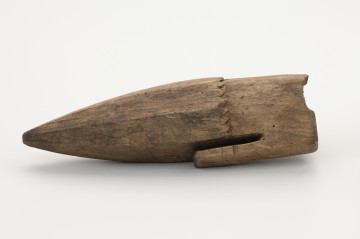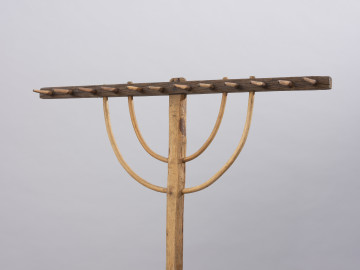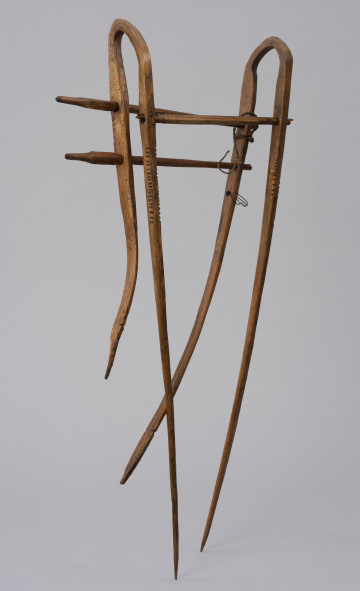
Whetstone holder
1925 — 1935
National Museum in Szczecin
Part of the collection: Agriculture
A short bladed scythe is an agricultural tool used for cutting cereal and grass, an intermediary form between a sickle and a scythe. It was generally unknown in Poland. It was used more frequently in northern Germany, France, Belgium, the Netherlands, as well as in Lithuania and Latvia. At first, much like the scythe, it was used for cutting grass or making hay. Only later, in the 18th and 19th centuries, it began to be used as a harvesting tool. The use of half-scythe for harvesting cereals was not particularly long in Pomerania, as already at the end of the 19th century agricultural machinery such as mowers and then sheaves began to be used for field work. From then on, tools such as the half-scythe and sickle, and later the scythe, began to serve ancillary functions on farms, and were utilised for cutting a small amount of grass for poultry or cutting weeds along a fence. The featured item found its way into the collection of the National Museum in Szczecin in the early 1970s. It was donated likely because it was no longer in use in the household of the residents of Przytor, already a part of Świnoujście since 1960. Iwona Karwowska
Author / creator
Technique
blacksmith techniques
Material
iron, wood
Origin / acquisition method
donation
Creation time / dating
Creation / finding place
Owner
Muzeum Narodowe w Szczecinie
Identification number
Location / status

1925 — 1935
National Museum in Szczecin

1960 — 1965
National Museum in Szczecin

1900 — 1920
National Museum in Szczecin
DISCOVER this TOPIC
National Museum in Szczecin
DISCOVER this PATH
Educational path